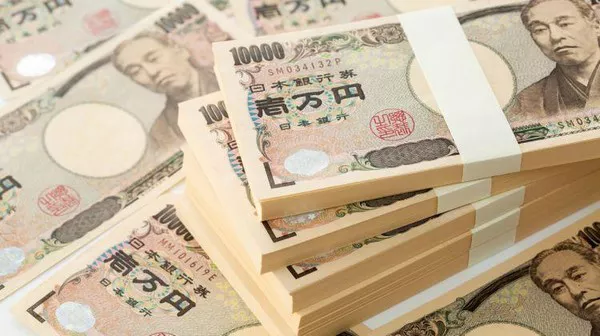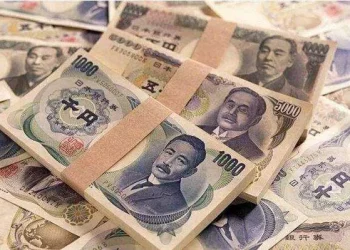The foreign exchange market, commonly known as Forex, is the largest financial market in the world. It operates 24 hours a day, five days a week, and facilitates the trading of currencies. As a foreign exchange trader, you may encounter various currencies and their denominations. One currency that often comes up in discussions is the Japanese yen. In this article, we will focus on the 10 yen coin, exploring its value, significance, and implications in foreign exchange trading.
Understanding the Japanese Yen
The Japanese yen (JPY) is the official currency of Japan. It is one of the most traded currencies in the world. The yen symbol is ¥, and its code is JPY. The Bank of Japan issues the yen. It plays a crucial role in the global economy. Understanding the yen is essential for traders and investors alike.
Historical Background
The yen was introduced in 1871 as part of the Meiji Restoration. It replaced the complex monetary system that existed before. The name “yen” means “round object” in Japanese. Initially, the yen was pegged to gold, but it transitioned to a fiat currency in the 20th century. Over the years, the yen has gone through various changes in value due to economic factors.
Current Value of the Yen
The value of the yen fluctuates constantly due to market dynamics. Factors such as economic indicators, interest rates, and geopolitical events influence the yen’s value. As of the latest data, the exchange rate of the yen against the US dollar is approximately 110 JPY to 1 USD. However, this rate can change significantly in a short period.
What Is a 10 Yen Coin?
The 10 yen coin is a denomination of the Japanese yen. It is one of the smallest coins in terms of value but holds significant importance in Japan. The coin is made of bronze and has a distinctive design.
Physical Characteristics
The 10 yen coin has a diameter of 23.5 mm and a thickness of 1.7 mm. It weighs 4.5 grams. The coin has a smooth edge and is easy to recognize due to its unique design. The obverse side features a picture of a young tree, symbolizing growth and prosperity. The reverse side displays the denomination, “10 yen,” in both kanji and arabic numerals.
Minting and Distribution
The Japan Mint is responsible for producing the 10 yen coin. It was first minted in 1951. Over the years, different designs have been introduced, but the basic elements have remained the same. The coin is widely circulated in Japan and is used in everyday transactions.
The Value of a 10 Yen Coin
Exchange Rate Considerations
To determine how much a 10 yen coin is worth in other currencies, we need to consider the exchange rate. As mentioned earlier, the exchange rate can vary. For example, if the current exchange rate is 110 JPY to 1 USD, then a 10 yen coin would be worth approximately 0.09 USD.
Conversion to Other Currencies
To further illustrate the value of a 10 yen coin, let’s convert it to several other currencies:
Euro (EUR): If the exchange rate is 130 JPY to 1 EUR, then a 10 yen coin would be worth approximately 0.08 EUR.
British Pound (GBP): If the exchange rate is 150 JPY to 1 GBP, then a 10 yen coin would be worth approximately 0.07 GBP.
Canadian Dollar (CAD): If the exchange rate is 100 JPY to 1 CAD, then a 10 yen coin would be worth approximately 0.10 CAD.
These conversions illustrate that the value of a 10 yen coin can vary significantly depending on the currency and the current exchange rate.
Purchasing Power
The purchasing power of a 10 yen coin in Japan is also an essential consideration. In Japan, 10 yen can buy small items, such as candy or a small snack. The value of money is relative to the cost of goods and services in a specific country. Therefore, while 10 yen may not seem like much in terms of foreign currency, it can still hold value within the Japanese economy.
Factors Affecting the Value of the Yen
Economic Indicators
Economic indicators are critical for determining the value of any currency, including the yen. These indicators include Gross Domestic Product (GDP), inflation rates, employment rates, and consumer spending. Strong economic performance usually strengthens a currency, while poor performance can lead to depreciation.
Interest Rates
Interest rates set by the Bank of Japan (BOJ) significantly influence the value of the yen. When the BOJ raises interest rates, it often leads to an appreciation of the yen. Conversely, lower interest rates can lead to depreciation. Traders closely monitor interest rate decisions, as they can impact the Forex market.
Geopolitical Events
Geopolitical events can create uncertainty in financial markets, affecting currency values. Events such as elections, natural disasters, and international conflicts can lead to fluctuations in the yen’s value. For instance, if Japan faces political instability, it may weaken the yen against other currencies.
Speculation and Market Sentiment
Traders in the Forex market often speculate on currency movements. Their buying and selling decisions can impact the yen’s value. If traders believe that the yen will strengthen, they may buy it, causing its value to rise. Conversely, if they believe it will weaken, they may sell it, leading to a decline in value. Market sentiment can drive short-term fluctuations in the currency’s value.
See Also: How Much Is a 500 Yen Coin Worth?
The Role of the Yen in Forex Trading
Currency Pairing
In Forex trading, currencies are traded in pairs. The yen is commonly paired with other currencies, such as the US dollar (USD/JPY) and the euro (EUR/JPY). Understanding these currency pairs is essential for traders. For example, if a trader believes the yen will strengthen against the dollar, they may buy the USD/JPY pair.
Technical Analysis
Traders often use technical analysis to predict currency movements. They analyze charts and historical data to identify trends. Indicators such as moving averages and Relative Strength Index (RSI) help traders make informed decisions. A strong trend in the yen can signal opportunities for traders.
Fundamental Analysis
In addition to technical analysis, fundamental analysis is crucial for Forex trading. Traders analyze economic data, interest rates, and geopolitical events to understand currency movements. Staying informed about Japan’s economic situation is essential for predicting the yen’s value.
Risk Management
Forex trading involves risks. The value of currencies can fluctuate rapidly, leading to potential losses. Traders implement risk management strategies, such as setting stop-loss orders and position sizing, to mitigate risks. Understanding the yen’s behavior is vital for effective risk management.
The Cultural Significance of the 10 Yen Coin
Everyday Use in Japan
The 10 yen coin is commonly used in Japan for everyday transactions. It is frequently used in vending machines, public transportation, and small shops. Its value, though small, makes it accessible for everyone. The coin is often found in pockets and purses, representing a part of daily life in Japan.
Symbolism and Design
The design of the 10 yen coin carries symbolism. The young tree depicted on the obverse side represents growth and prosperity. This symbolism resonates with the Japanese culture, emphasizing the importance of nurturing and developing both economically and personally.
Collectibility
While the 10 yen coin is primarily used for transactions, it also has collectibility among numismatists. Certain rare minting years and design variations can be valuable to collectors. These coins often hold sentimental value and can be passed down through generations.
Conclusion
Understanding the value of a 10 yen coin involves more than just its exchange rate. As a foreign exchange trader, knowing the dynamics of the yen is essential for making informed decisions. The 10 yen coin, while small in value, holds significance in Japanese culture and economy. Its value fluctuates based on various factors, including economic indicators, interest rates, and geopolitical events.
The value of a 10 yen coin can be understood in different contexts, from currency conversion to purchasing power in Japan. Traders must be aware of these factors to navigate the Forex market effectively. By comprehending the value of the yen and its coins, traders can enhance their strategies and better understand the complexities of the foreign exchange market.
Related Topics:

























